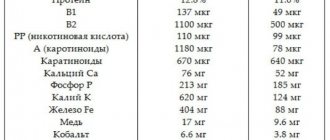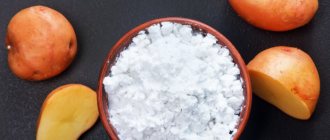Dietary properties:
How many calories are in cola, what dietary properties it has, all this is of great interest to those who lead a healthy lifestyle and monitor their health and figure. So we will try to answer these questions in the following article.
So:
Carbonated water lifts our mood and gives us a boost of energy, but this effect is short-lived. It increases physical and mental performance, thanks to the caffeine it contains, which is a natural stimulant.
If you drink one glass of Coca-Cola, your body will begin to produce serotonin - the so-called joy hormone. Sucrose turns into fructose, and that, in turn, into the glucose we need so much. However, its excess can cause digestive disorders and, as a result, the appearance of extra pounds.
Regular consumption of this drink leads to “washing out” of calcium from bone tissue. This is due to the presence of phosphoric acid in Coca-Cola. Calcium deficiency is especially dangerous for older people and young children.
"Coca-Cola Light": calorie content, beneficial properties, benefits and harm
The carbonated soft drink has remained popular since it was invented by American chemist John Pemberton in 1886, followed by the Coca-Cola brand name and famous bottle design a decade later. Now the company produces not only the universally recognizable format of the drink, but also a dietary version.
A little history
For centuries, the drink has delighted its fans with its unchanged composition and recognizable taste. The bouquet of the drink is unique and its production is kept secret from competitors. Nowadays there is a lot of talk about the dangers of cola, but not everyone knows what exactly its harm is. It is believed that Coca-Cola Light is completely harmless, because it contains no empty calories.
At the beginning of cola production, the ingredients were not only unhealthful, they were simply dangerous. After all, one of the main components was an extract from the leaves of the coca plant. Much later, they learned to make a drug from these same leaves.
But at that time, more and more new soda lovers found a refreshing and invigorating drink. Due to the fact that there have been cases of overdose of the soft drink, the recipe was slightly changed.
An extract from another part of the plant, which did not contain narcotic substances, was added to the drink.
Composition and calorie content
Everyone knows that the recipe for cola is a closely guarded secret. However, there is still some data. The composition of Coca-Cola Light differs from regular Coca-Cola only in the absence of sugar. In addition to extracts from the leaves of the plant, the composition includes sugar or aspartame, caffeine, citric acid, vanilla, and caramel.
To create exactly that unique aroma and taste of soda that is popular all over the world, a secret mix of aromatic oils was compiled. Oils of orange, lemon, cinnamon, nutmeg, coriander and neroli in certain proportions allow you to recognize the taste of Coca-Cola even with your eyes closed.
The calorie content of regular Coca-Cola is 42 kcal per 100 g. Soda contains 10.4 g of carbohydrates.
Important!
Considering that no one drinks cola in 100-gram glasses, more and more consumers are choosing Coca-Cola Light, which contains 0 calories.
The sugar in this drink has been replaced with artificial sweeteners - this is how manufacturers got rid of the high calorie content of Coca-Cola Light. Has these changes made cola any more harmless?
Negative effects of the drink on the body
So much has been said and written about the dangers of Coca-Cola. Everyone knows that carbonated drinks are very bad. And the harm from Coca-Cola Light is no less than from other carbonated drinks. But why is it bad and how little is it, anyone wonders.
There is not a single healthy carbonated drink. The reason lies not only in the content of a large amount of sugar, but also in carbon dioxide and other acids found in the pop.
Coca-Cola Light does not contain sugar, but there are very dangerous sugar substitutes: aspartame and sodium cyclamate. These substances are considered carcinogenic. Therefore, light is increasingly consumed by patients with diabetes and obese people.
Which only worsens their health problems. Drinks with aspartame may encourage people to consume sugary foods because...
After consuming artificial sweeteners, the body loses the ability to accurately estimate the number of calories consumed.
Carbonated drinks like Coca-Cola Light or Zero do not provide any nutritional value to the body: they do not contain any beneficial vitamins, minerals, or fiber.
The caffeine in cola may also pose certain health risks. Although the amount of caffeine in this soda is relatively small compared to a cup of coffee, some people may be very sensitive to its effects. These include pregnant women and people with certain medical conditions that cause the body to absorb caffeine more slowly than usual.
Caffeine can cause unpleasant side effects such as anxiety, irritability, and difficulty sleeping, especially when consumed in excess.
Despite the fact that Coca-Cola is indeed a very sweet product, even without sugar, it is also salty. Few people know about this fact, however, one standard serving of cola contains 40 mg of sodium. What makes this drink deadly for people with hypertension. Salt is known to have the properties of increasing blood pressure.
Advice!
The content of orthophosphoric and citric acids in the drink leads to problems with the gastrointestinal tract. Acids have an aggressive effect on the lining of the stomach and can also destroy tooth enamel. Frequent consumption of cola, whether regular or diet cola, causes osteoporosis because it leaches essential calcium from the bones.
Drinking cola with ice, which is how most people drink it, does not allow food to be completely digested in the stomach, which leads to gastritis, ulcers, and intestinal problems.
Benefits of Drinking Diet Coke
Based on the above, it can be understood that Coca-Cola, even light, is a completely unsafe product. However, consuming it in small quantities can sometimes even be beneficial for some groups of people.
By the way, diabetics are deprived of the joy of eating sweet foods. Therefore, they may well occasionally treat themselves to a glass of Coca-Cola Light, which will not raise the level of insulin in the blood.
Nowadays a healthy lifestyle is widely promoted, where proper nutrition and clean water occupy the main place. When eating large amounts of vegetables and fruits, which contain a lot of fiber, a bezoar stone may form in the stomach.
Cola can dissolve it. The high acidity of the carbonated drink acts as a stomach acid and can relieve severe abdominal pain, dissolve stones and allow food to be digested. But in this case, it should be used under the supervision of a doctor.
Coca-Cola Light (or Zero) can help you concentrate. A little cola will allow the caffeine to quickly enter the bloodstream and make you feel more alert.
On topic: Julia Chekhonina's diet menu for the week
What processes does cola cause?
A couple of minutes after drinking cola, the sugar contained in a glass of drink deals a deadly blow to the body. The only reason why huge amounts of sugar do not cause vomiting is phosphoric acid, which interferes with the action of sugar. Then there is a sharp increase in insulin in the blood. The liver converts excess sugar into fat.
Caffeine is absorbed a little later. Blood pressure increases, preventing drowsiness. The body begins to produce the hormone dopamine. Phosphoric acid binds minerals in the blood and removes them from the body through urine. The diuretic effect of the drink begins. All water contained in Coca-Cola is removed. And thirst arises.
Coca-Cola Light and diet
Those who have been on a diet know how difficult it can be to fight the feeling of eating something sweet. Some have good willpower and can resist themselves. Others allow themselves to relax a little.
According to reviews from those losing weight, Coca-Cola Light helps a lot on a diet. It seems like I ate something sweet, but without the calories. Some nutritionists even advise drinking a Diet Coke occasionally to prevent a breakdown.
Whether to try it for yourself or not is everyone’s business. But the harm from cola should be taken into account.
How to use it on the farm?
There are areas of use of cola for which it does not matter whether it is beneficial or harmful.
There are many tips online on how to use the drink around the house.
For example, you can clean tiles or pipes from rust. You can also descale a kettle by boiling it with cola.
You can even wash it with cola. If you soak a greasy stain on clothing in Coca-Cola, the grease will quickly dissolve.
Coca-Cola can be used both internally and at home. Before use, it is better to weigh the pros and cons. And then drink a glass of clean water.
Source: https://fb.ru/article/323706/koka-kola-layt-kaloriynost-poleznyie-svoystva-polza-i-vred
Counting calories
Calories are units of energy, including that contained in food. A person gets calories from fats (1g – 9 kcal), carbohydrates and proteins (1g – approximately 4 kcal)
Weight depends on the relationship between the calories we consume and the calories we expend. If the calories that enter the body with food are counted by many, then few people think about the “consumption” of calories.
Experts recommend exercising 4-5 times a week for 40-60 minutes. If circumstances do not allow you to devote so much time to physical exercise, try to at least rest actively. Take a walk in the park, visit the pool instead of hanging out in a cafe.
Calculate how many calories you consume on average per day. Carefully write down what you ate during two working days and one weekend (after all, we don’t eat the same at home and at work).
Carefully read the calorie information on food packaging or use calorie tables. Count the number of calories in the foods you ate over a given period of time.
Divide the total number of calories by the number of days during which “recording” was kept.
Foreyt, a nutritionist from America, suggests cutting your daily diet by 100 kcal, and increasing physical activity by the same amount of calories. This will help you lose about a kilogram per month.
Important!
The daily diet should in no case contain less than 1000 kcal. Otherwise, you risk developing various diseases, such as cardiovascular diseases.
1200 kcal per day is the minimum for a woman, but even this amount of calories will most likely lead you to an energy slump. The weight, of course, will decrease, but you will not have the strength to lead an active lifestyle, and, therefore, the weight will return to its previous level as soon as you stop the diet.
In addition, if you limit your diet to 1200 kcal per day, your metabolism will slow down and you will begin to lose muscle mass. The body will not receive the nutrients it needs. Experts advise reducing caloric intake gradually and moderately (according to the Foreit plan, for example).
On the subject: Kefir striped diet, reviews from those who have lost weight
Low-calorie and low-fat foods
Undoubtedly, half a cup of low-fat cottage cheese has fewer calories than glazed cheese curd. However, studies have shown that people compensate on a subconscious level for the lack of sugar and fat.
That is, you buy, for example, Diet Coca-Cola instead of regular Coke and wash down an impressive-sized hamburger with it.
Therefore, low-calorie, low-fat foods are unlikely to significantly help you lose weight.
Instead, take other measures: control portion sizes, consume fiber, eat vegetables. Be careful with fruit. The fructose contained in them easily turns into fat.
Empty and hidden calories
Empty and hidden calories are not the same thing. Empty calories are found in some foods that have little nutritional value.
For example, a glass of orange juice contains 120 kcal, and, in addition, vitamin C and potassium. A glass of soda of the same volume may contain the same 120 kcal, but absolutely no useful substances.
Thus, it turns out that soda is a supplier of empty calories.
Most often, products that have been processed for a long time contain few trace elements and vitamins. Instead, there is an excess of fat, sugar, and empty calories. Hidden calories are difficult to count. You won't be able to tell how many calories are in the hot dog you buy. After all, it is unknown what kind of sausage is included in it, and the fat content of mayonnaise cannot be determined by eye.
"Evening" calories
The calories that enter the body in the morning or afternoon provide us with “fuel” so that we can live actively. The evening meal turns into a fat reserve, since in the evening and at night we spend little energy. Dinner should not be dense and greasy.
Source: https://pohydenie-dieta.ru/schitaem-kalorii/











